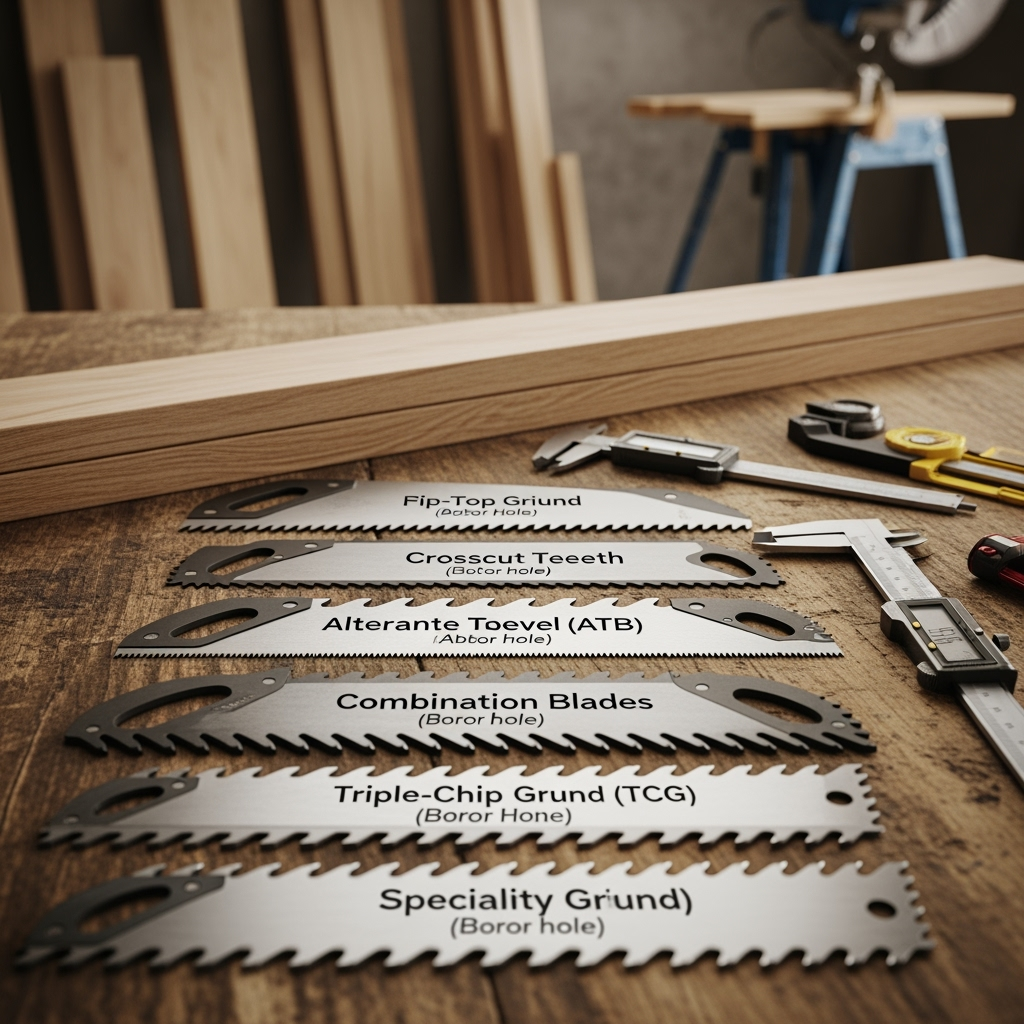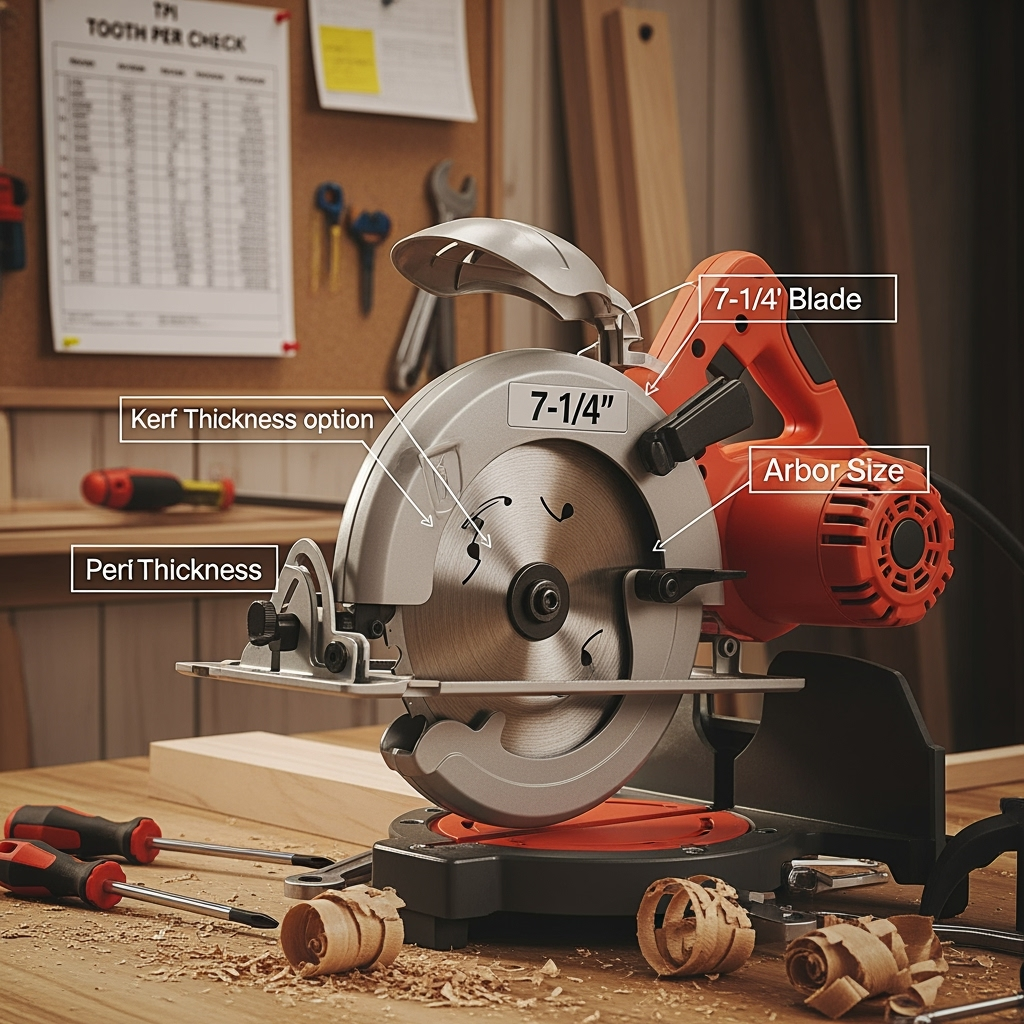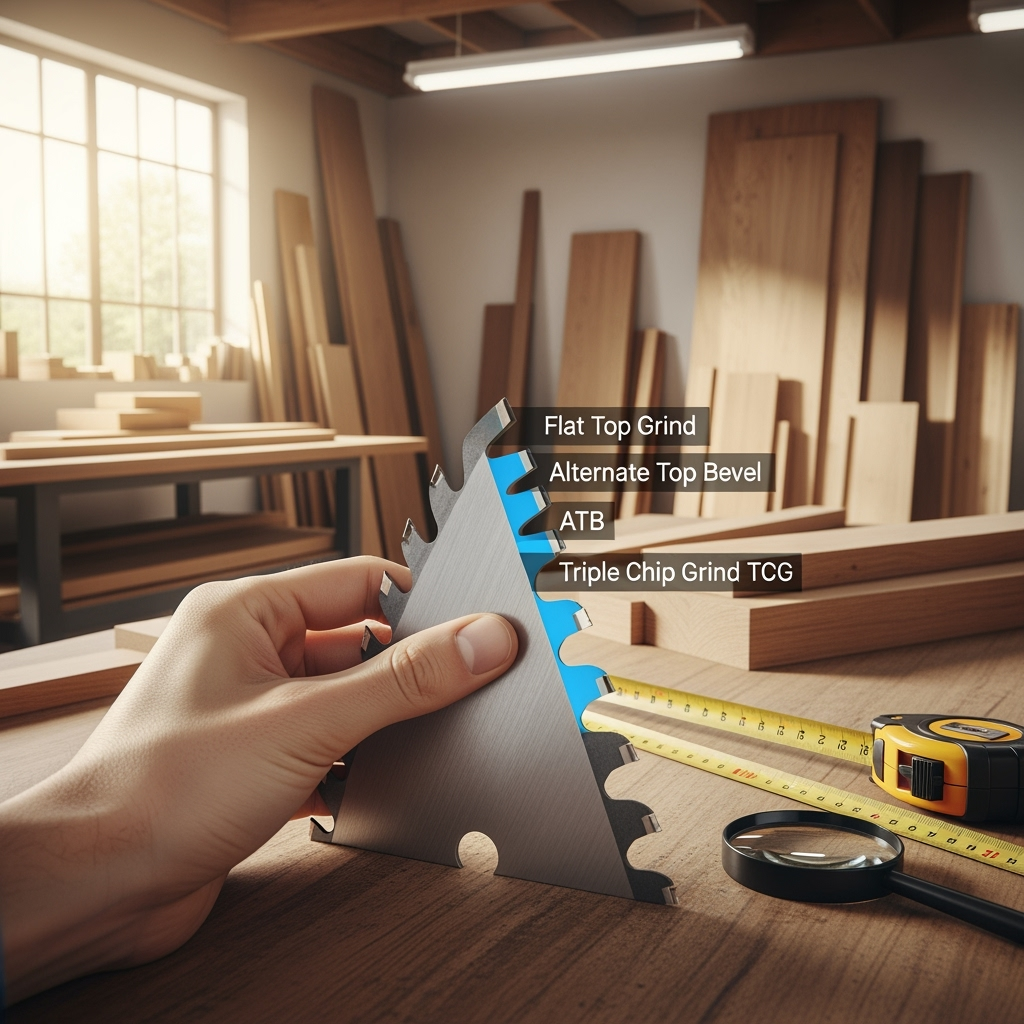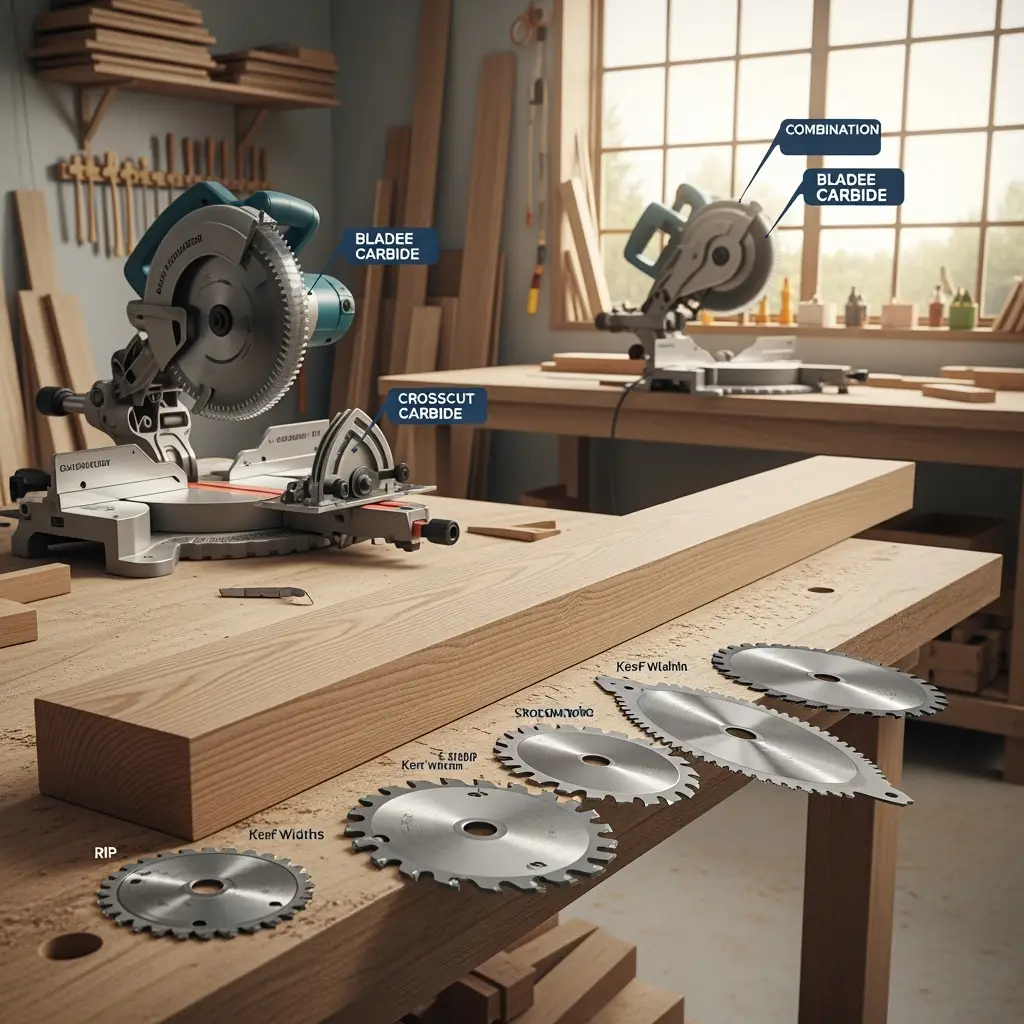Y’all ever stand in the tool aisle, staring at endless rows of shiny saw blades, and feel like you’re back in math class totally clueless? Same here. If you’re wondering how to choose saw blades for your next wood project, pull up a chair. I’ve been through that wild ride, cut up more boards than I can count, and today I’m here to clear the fog.

Why Choosing the Right Saw Blade Matters
- Clean, sharp cuts save you time sanding
- Blades matched to the job keep your tools running longer
- You’ll waste way less material
- Going cheap or wrong? You’ll chew through wood (and patience) fast
The bottom line is, knowing how to choose saw blades can totally make or break your projects. Let’s break all that technical stuff into easy bites. Trust me, it’s gonna click.
The Basics: What IS a Saw Blade?
Before we go deep, let’s get the basics down. A saw blade is essentially your woodshop’s razor: it’s the bit that actually does the cutting. Most blades are metal circles with dozens of sharp, crafty little teeth. Knowing how to choose saw blades means understanding what those teeth do, how they’re shaped, and which ones fit your tool.
The Main Types of Saw Blades
- Rip Blades – Designed for fast, straight cuts along the wood grain
- Crosscut Blades – For slicing across the grain, giving you smooth, chip-free edges
- Combination Blades – The Jack-of-all-trades, doing decent work ripping and crosscutting
- Specialty Blades – For plywood, laminates, metal, and even plastic
If you’re not sure how to choose saw blades for your job, start by figuring out if you’re ripping, crosscutting, or handling special stuff. That narrows the field a TON.
Know Your Saw! Compatibility is Everything
Get this: Not every blade works with every saw. You gotta check your tool’s manual or website to see what’s compatible. Things to keep in mind:
- Blade Diameter – Most common are 7-1/4″ (circular saws) or 10″ and 12″ (table/miter saws)
- Arbor Size – The hole in the middle! Yours must match your saw
Learning how to choose saw blades starts with knowing what your saw will take. If they don’t match, you’re gonna have a bad time – and maybe break your gear (or worse, yourself).
Decoding Teeth: TPI and Tooth Grind Matter Big Time
Here’s where the magic happens – the teeth. A saw blade’s teeth count, shape, and even their angles have a huge impact on the cut. Here’s the lowdown if you wanna nail how to choose saw blades:
Teeth per Inch (TPI):
- Low TPI (14–24): Good for ripping along the grain (fast cuts, rougher finish)
- Medium TPI (40–60): Combo blades, decent for both rips and crosscuts
- High TPI (60–100+): Crosscutting or fine finish work (super smooth edges)
Tooth Grind:
- Flat Top Grind (FTG): Efficient at ripping, slices cleanly through fibers
- Alternate Top Bevel (ATB): Angled teeth for crosscutting and crisp edges
- Triple Chip Grind (TCG): Great for hard stuff like laminate or non-ferrous metals
Think about what you cut most. Mastering how to choose saw blades is all about picking teeth that suit your main stock.

Kerf: Does Thickness Actually Matter?
Ooh, now let’s talk kerf – the width of the actual tooth. It’s not just a fancy word! Here’s what you need to know when figuring out how to choose saw blades:
- Full Kerf (about 1/8”): Sturdy and less likely to warp; best on saws with at least 3 HP
- Thin Kerf (3/32” or less): Cuts with less effort, perfect for less powerful saws or saving material
Light-duty saws, like contractor-grade or job site tools, benefit like crazy from thin kerf blades. Don’t burn out your motor with a blade that’s too beefy!
The Secret Science: Hook Angle and Plate Thickness
This stuff is often overlooked, but it’s essential in how to choose saw blades. Here’s the deal:
- Hook Angle: Positive hook (forward-leaning teeth) grabs aggressively – good for rips. Negative hook (teeth lean back) is safer for miter saws and gives smoother cuts (but cuts a bit slower).
- Plate Thickness: Most blades are around 1.5 mm to 2.2 mm. Thicker means less vibration, but higher power demand.
Matching hook and plate to your saw and material is a huge win in perfecting the art of how to choose saw blades.
What’s Your Stock? Materials Change Everything
If you’re always attacking pine 2x4s, you’ll want a different blade than if you’re into MDF, melamine, or gnarly hardwoods. Here’s the deal on choosing the right tool:
- Hardwoods: Slower feed, more teeth (ATB or combo grind)
- Softwoods: Lower tooth count, sharper angles (FTG or ATB)
- Plywood/Sheet Goods: Fine-tooth (80–100 TPI), TCG or high-ATB grind to prevent splintering
- Laminates/Melamine: Special TCG with very sharp, hard teeth
When folks ask how to choose saw blades, material always comes up first. Don’t be that person using a rough rip blade on fancy plywood – trust me, it’ll make ya cry.
Coatings and Materials: Do They Even Matter?
OK, so let’s talk bling. Some blades are coated (with Teflon, carbide, etc.), others just steel. It’s not just for show:
- Carbide-tipped: Freakin’ tough – stays sharp 10x longer, can handle nails in wood, etc.
- Non-stick coatings: Reduce pitch/gum buildup (good for pine or sappy woods)
- Steel: Cheap, but dulls super fast – only good for dirty demolition work
If you’re getting serious about how to choose saw blades, invest in carbide tips. Your wallet will say thanks later.

Price Range: What’s Worth Paying For?
Here’s a hard truth: Cheap, bargain-bin blades rarely impress. You might get through a project, but you’ll burn more wood, and see rougher edges. The best advice for how to choose saw blades on a budget?
- Start with a decent combo blade if you only get one (the best you can afford)
- Upgrade to specialty blades as you do more
Brands like Freud, Diablo, DeWalt, Forrest? They’re popular for a reason – sharpness and durability. Spending $50 on a quality blade pays off in happiness (and less cussing).
Maintenance Tips: Making the Most of Each Blade
- Clean off pitch/gum buildup every few projects
- Store blades flat, dry, and out of the way
- Sharpen carbide blades professionally when they start burning wood
- Check for damaged teeth before each use
You’d be shocked at how much good care can extend your blade’s life! Learning how to choose saw blades is only half the battle – keeping ‘em sharp is just as key.
The Perfect Combo: Starter Kits for Beginners
It’s easy to feel overwhelmed by all these choices. For those wondering how to choose saw blades without blowing cash, try this:
- One 24-tooth rip blade (table/mitre/circular saw)
- One 60–80 tooth crosscut/finish blade (for plywood and smooth cuts)
- Upgrade to specialty blades when needed (laminates, non-ferrous metal)
With those two basic blades, you’ll CRUSH 90% of wood projects. Save up and build your collection over time.
Matching Blade to Your Project: Quick Reference
- Framing lumber? Rip or combo blade, 24–40 TPI
- Trim and finish work? Crosscut or fine-finish, 60–80+ TPI
- Cabinet-making? High-ATB, thin kerf, 80–100 TPI
- Circular saw, outdoor jobs? Carbide combo, tough teeth, 18–24 TPI
This is the stuff nobody tells you when you google how to choose saw blades – but it’s game-changing knowledge.
Safety First: Don’t Cheap Out Here!
- Wobbling, worn-out, or cracked blades are DANGEROUS
- Use the blade guard whenever you can
- Replace immediately if you see missing teeth or warping
Remember, you can’t do projects if you’re hurt. Learning how to choose saw blades also means knowing when to retire ‘em (and protect your fingers!).
Insider Mistakes to Avoid
- Using the wrong blade for material (like plywood with a rip blade) – hello splinters!
- Not checking allowed rotation direction
- Ignoring kerf on under-powered saws – your cuts will burn and get ugly quick
- Thinking one cheap blade does it all – seriously, just don’t
Knowing how to choose saw blades saves you money, time, and wood. Don’t learn these the hard way!
Expert’s Pro Tips for Smoother, Safer Cutting
- Let the blade do the work. Don’t force it! If it smells like burning, swap blades.
- Clean your blades frequently with blade cleaner and a brass brush.
- Invest in a quality blade stabilizer if you want glass-smooth cuts.
- If possible, test-cut on scrap before you commit to a pricey board!
This is the kind of stuff that’ll level up your skills fast. How to choose saw blades? It’s about knowing and respecting your tools.
FAQs: Quick Answers to the Most Common Questions
- Q: Do I need a different blade for hardwood and softwood?
A: Yup! More teeth, slower feed for hardwoods. Lower tooth count and more aggressive angle for softwoods. - Q: Can I use table saw blades on a miter saw?
A: Sometimes, if arbor size and diameter match – but ALWAYS check your manufacturer’s recommendations. - Q: Are expensive blades worth it?
A: Totally. Less tear-out, fewer burns, and they last longer. Consider it an investment. - Q: When should I replace my blade?
A: When cuts get rough, the saw strains, or you feel/hear/see burning. Damaged teeth are a dealbreaker!
The Final Verdict: Rule the Workshop By Picking the Best Saw Blade
So, next time you’re squinting at saw blades (and getting a headache from all the numbers), just remember this guide. How to choose saw blades is way less intimidating once you know the lingo and what to think about. Pick your blade based on:
- Job type (rip, crosscut, combo, specialty)
- Saw type and compatibility
- Tooth count and grind for your project
- Material of the blade and protective coatings
- Your budget and how serious you are about smooth results
That’s it! Go grab the right blade, make some sweet sawdust, and flex your how to choose saw blades wisdom. I promise, you’ll notice the difference instantly on your next woodworking adventure!









